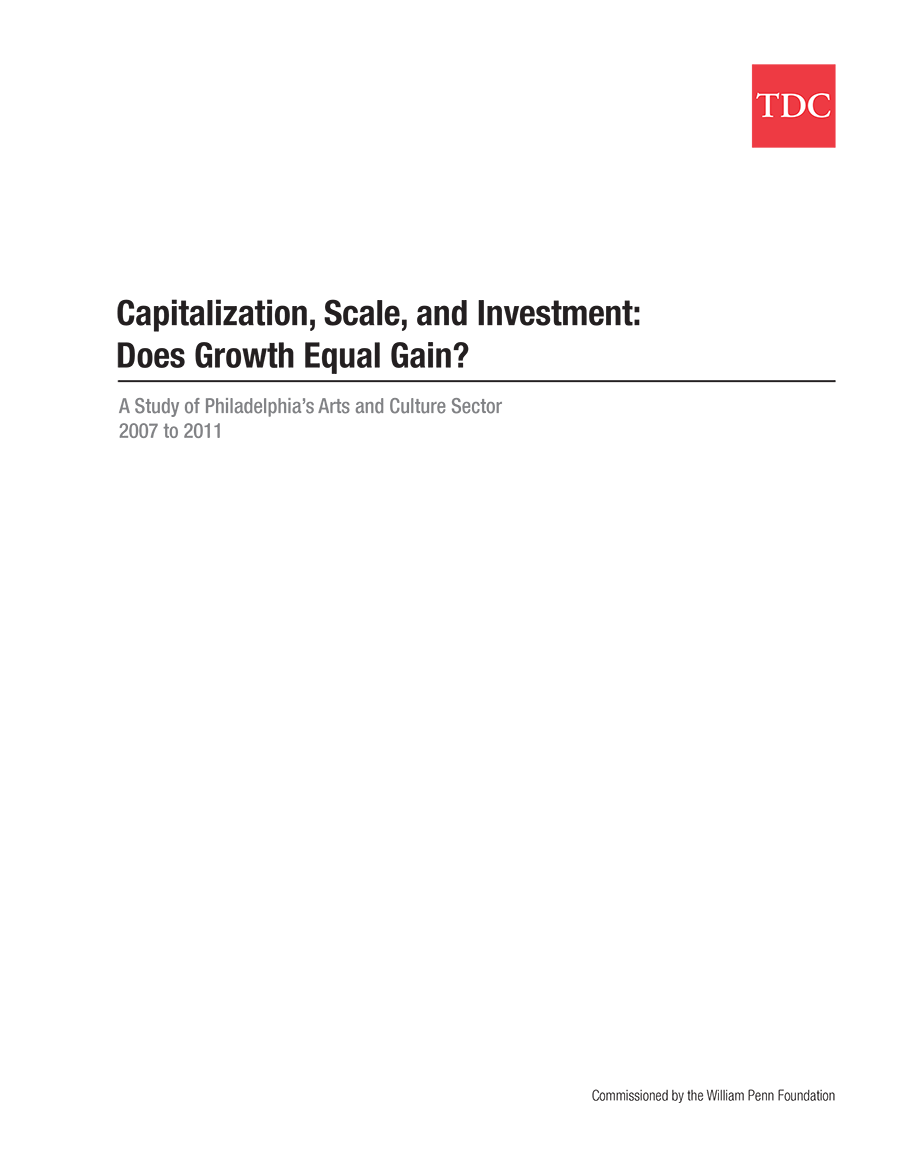Capitalization, Scale and Investment: Does Growth Equal Gain?
A Study of Philadelphia’s Arts and Culture Sector, 2007 to 2011
February 2015, 31 pages. TDC, 31 Milk Street, Suite 310, Boston, Massachusetts, 02109. (617) 728-9151, www.tdcorp.org.
Download:
![]() Capitalization, Scale, and Investment: Does Growth Equal Gain? (617 Kb)
Capitalization, Scale, and Investment: Does Growth Equal Gain? (617 Kb)
In 2009, TDC published Getting Beyond Breakeven, a study commissioned by the William Penn Foundation and The Pew Charitable Trusts, which reviewed the capitalization needs and challenges of arts and culture organizations in Philadelphia.
This study, also commissioned by the William Penn Foundation, is divided into two major sections.
The first section, Trends in the Greater Philadelphia Ecosystem, aims to take the temperature of the Philadelphia arts ecosystem again, in order to see how organizations fared over the five year period of 2007 to 2011. It looks at the data through the lenses of budget size, age, discipline, and financial health and explores questions such as: What happened to revenue and expenditures? What were the major drivers? Who gained? Who lost ground?
The organizing principle behind the second section, Assessing Investments Toward Growth, evolved over the course of the study with the intention of identifying factors that correlated with financial health. The authors hypothesized that sustained investments in program, marketing, and fundraising could predict gains to financial health. When the attempt was made to identify organizations that had made sustained investments, few were found. At the same time, the data did show widespread growth. The authors identified an assumption that growth is a proxy for health and posit that growth is complicated, and should not be viewed as a one-size-fits all remedy for financial distress. While growth is a feasible aspiration for some organizations, it can be debilitating for others.

